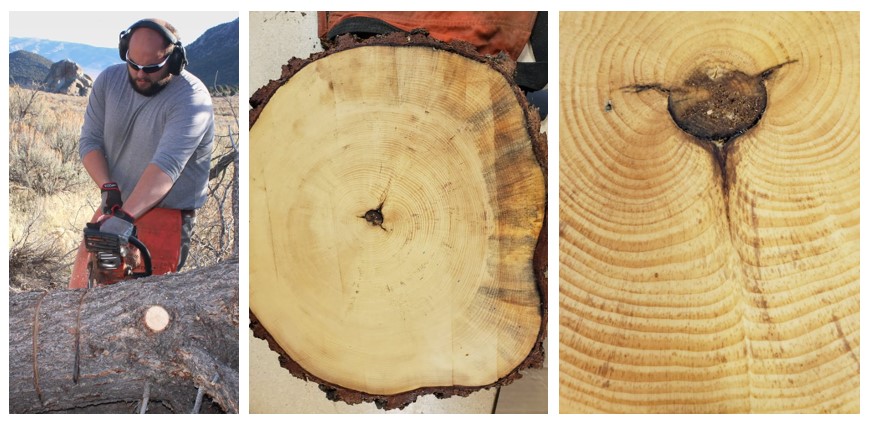Now that we have found the largest pinyon in the Reserve, we set out to sample plots where much smaller pinyon are dead or dying to determine their age. We located trees that had already snapped off at the base and cut a slice off the trunk to produce a “cookie.” We then took the cookies to the shop, sanded, and stained them so that the growth rings were easy to count. We discovered that most of the trees had a life span of 66-90 years. This is disheartening, since many of the ancient trees are estimated to be 350-450 years old, and a few could greatly exceed 450. Again, we wondered, why are young trees dying when the old ones are thriving? Much more could be learned from dendrochronology, such as dating when fires or drought occurred or years of excellent growing conditions. A park ranger uses a chainsaw to cut cross sections of a large pine tree to determine its age.We will come back to our samples from time to time to help validate or disprove our hypotheses.
Pictured here is a 90 year old tree that recently died. A six-inch slice of the fallen tree was cut from the base and the growth rings where counted.

|
November 13, 2019
|
Last updated: February 13, 2020
